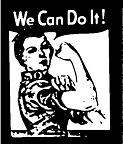home / teaching reading / homeschooling / gifted kids / breastfeeding / crafts |
||||||||||||||||||||||||||||||||||||||||
|
"A good education for every child
does not mean the same education for every child. " Please use what works for you and your
child and ignore the rest. Every
child is different. If this information
does not seem to be a good fit for your particular child, then keep looking
and experimenting until you find what works. This Web Page by Pauline
Harding for Art Nurk, hardingpj@yahoo.com |
If you need to teach a serious phonics program, you’ll want to find a good book to guide you. I like Phonics from A to Z, A Practical Guide, by Wiley Blevins. However, some children will do fine with just an informal introduction to the basics. Here are the first few ideas that are usually taught in a phonics program. This roughly corresponds to what is generally taught in Kindergarten and first grade. (The Real Kids Readers series has great info in the back of the phonics rules used in each book.) Below is a chart of the typical progression of phonics instruction. Generally, you would move from the top left corner of the chart, fanning out both down and across the chart, introducing new topics when you see fit. Sight words, those frequently-used words that do not follow phonics rules, can be taught formally or addressed when they arise naturally during reading. Sight words include the, two, etc.
Initial consonants:This is a fancy name for “what does ‘bear’ start with?”. It can be introduced quite early, and emphasized with alphabet books, sorting games, etc. For example you could cut out pictures of things that start with “b” and “c” and sort them out or make a poster. Many kindergarten programs spend a week on each letter of the alphabet, learning to write the letter “b”, having a “b” snack (bagels and butter and bananas), reading books and/or poems that feature the letter B, etc. Final consonants:The “ending sound” of words like pin, hat, and log. Beginning and ending blendsBlends are two letters that make a “blended” sound in which you can hear both letters. They include pl, tr, cl, sl, fl, pr, st, cr, sw, and cl. Digraphs:“Digraph” is a fancy name for two letters that make a single sound. The sound isn’t the same as what you’d get if you tried to blend the letters, for example ch does not sound like “kuh-huh”. Digraphs include ch, th, and sh. Short Vowels:These words and the associated motions can be a great reference for the short vowel sounds. Teach them to your kids so they can easily remember the sounds. Use them to sound out words as you read together. Do the motions each time you make the sound, to help your child remember the words. These “sound sample words” will probably not be the words you will actually be reading - more likely you will use words like bag, bed, pig, hog, hug, etc.
Long vowels:Long vowels (like the a in bake, the I in hide, the o in code, the u in cube) “say their name”. They often go along with a silent “e”. We say “a silent ‘e’ makes the vowel say it’s name.” Basic “sounding out”Teach your kids the basic “sounding out” techniques. This is harder for some kids than others, and it’s a critical skill. Model this yourself: “let’s see – m-a-p, /m/, /a/, /ma/, /p/, /map/” or you could do “mmmmaaaaaapppp”, “mmaaaapp”, “maaap”, “map”! Point to the letters as you go through the word. This is where large print is handy! Try this with word wall words. Common endings:Its usually quite easy to explain that an “s” on the end makes a word plural. Cover the ‘s”, read the word, then add the ‘s’ sound to make it plural. Other common endings include –ed and –ing. I have found that these crop up often enough when the child reads aloud that they can simply be mentioned when they arise naturally, rather than needing more formal instruction. Vowel combinationsThe easiest and most useful of these is “When two vowels go walking, the first one does the talking, and says it’s name.” This is true for words like “seat”, but not for words like “chief”. More PhonicsIf your child is reading on their own at this point, and progressing nicely, you may not need more phonics than this. Phonics instruction may also become more about spelling strategies than reading skills. However, if you child is still struggling and knows the stuff above well, then you’ll want to continue phonics instruction. You’ll need a good phonics reference book. I like Phonics from A to Z, A Practical Guide, by Wiley Blevins. PunctuationAs you begin to work on sentences and longer text, you’ll want to discuss punctuation. A period means to stop and take a breath. It marks the end of the thought. A comma means to pause briefly. Exclamation points and question marks also mark the end of sentences – they change the way you say the sentence. Quotation marks indicate what someone is saying. And so on. |
